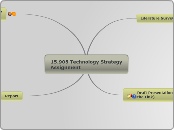作者:Ziya Deniz Eralp 15 年以前
513
15.905 Technology Strategy Assignment
Advantages of Product Systems

作者:Ziya Deniz Eralp 15 年以前
513

更多类似内容
In general terms, a product family is a group of related products that is derived from a product platform to satisfy a variety of market niches. Meanwhile, a product platform can be either narrowly or broadly defined as:
• "a set of common components, modules, or parts from which a stream of derivative products can be efficiently developed and launched" (Meyer andLehnerd, 1997, p. 7)
• "a collection of the common elements, especially the underlying core technology, implemented across a range of products" (McGrath, 1995, p. 39)
• "the collection of assets [i.e., components, processes, knoweledge, people and relationships] that are shared by a set of products" (Robertson and Ulrich, 1998, p. 20)
A review of the literature suggests that product platforms have been defined diversely, ranging from being general and abstract (for example, Robertson and Ulrich, 1998) to being industry and product specific (for example, Sanderson and Uzumeri, 1995). Moreover, the meaning of platform differs in scope: some definitions and descriptions focus primarily on the product/artifact itself (Meyer and Utterack, 1993) while others try to explore
the platform concept in terms of a firm's value chain (Sawhney, 1998).
You have to know where to stop in making things common !!!
What can be different in a product system?
What is common in a product system?
In fact, there is some redundancy (this mindmap and the spreadsheet both have literature survey part. Perhaps we should keep one gold copy.
This book covers the benefits that Scania realized by having a modular product system/platform.
<Deniz>The product families have a shared core. This core is composed of common user needs, common distribution channels, common manufacturing processes. By sharing this core, platform based approaches help the companies to eliminate redundant development and marketing effort. Also, multiple products can be introduced at once, which is very difficult for the independent product development case. However, there are some trade offs. The platform approach introduces an overhead on the development of a product-family member compared to an independent product.</Deniz>
<Deniz>This is the most comprehensive resource related to the topic. The book provides guidance for the creation of platform-based product family strategies. The approach introduced by the books is; having a product platform will enable the company to compete with rapid changes in the market as well as saving the company from recurring costs of developing new products from scratch.</Deniz>